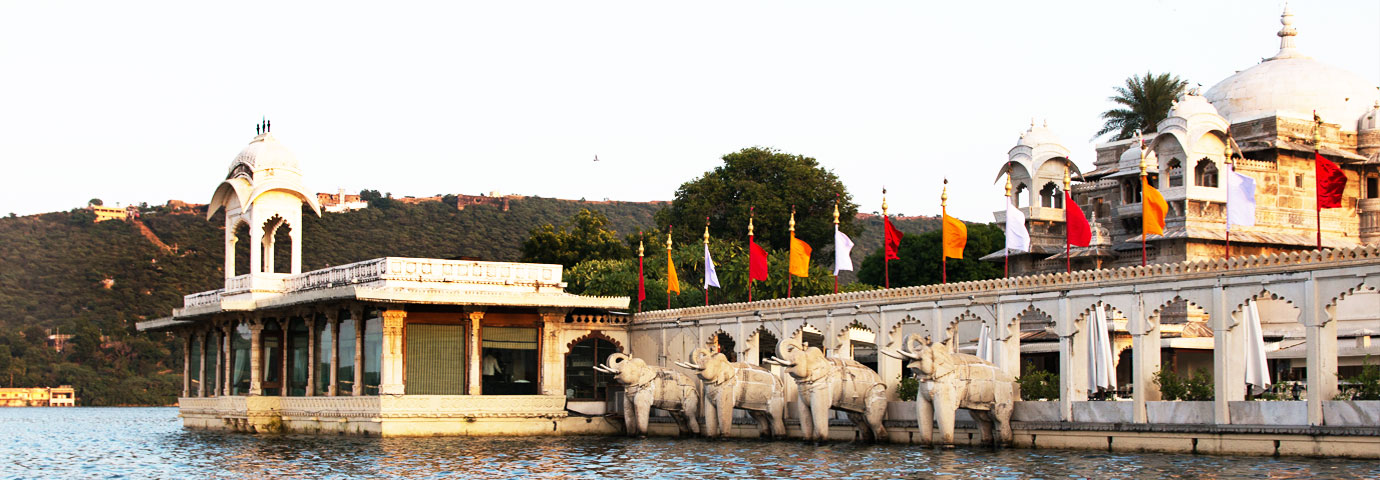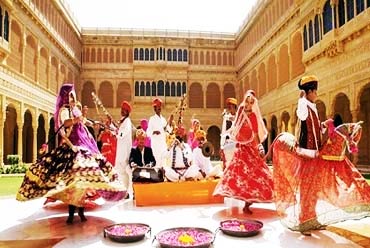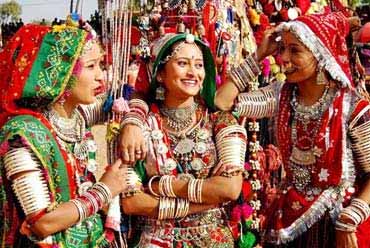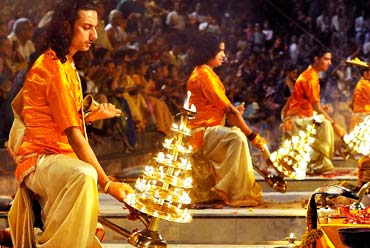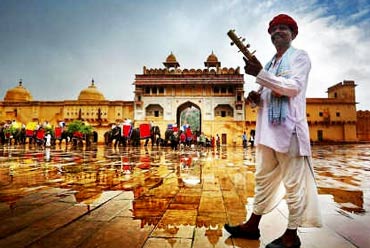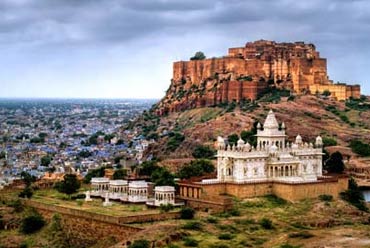Jag Mandir is a fascinating palace that is built on an island in Udaipur. The palace has its exact location on the southern part of the beautiful Lake Pichola. Counted amongst the most prominent tourist attractions of Udaipur, the three storied palace is a fine example of Rajput style of architecture.
The construction of this structure of yellow sandstone and marble was completed in the 17th century by Maharana Jagat Singh I. Being a property of the Royal Mewar family, the palace was mainly governed as a summer resort by the rulers in the bygone era.
History
Construction of Jag Mandir Palace at first was started by Maharana Amar Singh of Sisodia Rajputs of the Mewar kingdom. The construction work continued later by the two succeeding rulers of the clan- Maharana Karan Singh and Maharana Jagat Singh I. Other than that, the palace has an interesting history revolving around it.
It all started with Maharana Karan Singh of the Sisodia Rajput clan, getting all benevolent with the great Mughal emperor Shah Jahan. The Mughal ruler conspired against his father; Jahangir to be crowned the next king. On smelling danger in the execution of his plans, he sought refuge in the territory of Mewar kingdom, under the rule of Maharana Karan Singh.
The Mughal family (Shah Jahan with his wife and two sons) were shifted to various safe havens (palaces and forts) in the Mewar kingdom. In the end they were rested at a domed pavilion known as Gul Mahal, which was later transformed into a fascinating palace.
These friendlies between the Mughals and the Rajputs soon fell prey to the irony of time, when Maharana Amar Singh was defeated by the very hands of Shah Jahan, known by the name of ‘Khurram’ at that time.
The transformed Gul Mahal underwent various additions in the reign of Maharana Jagat Singh I. For his brilliant designing of the structure, the ruler came to be known as one of the best architects in all of the Mewar dynasty. It is due to this, the final structure was named as Jag Mandir, after him.
Architecture
The yellow sandstone structure of Jag Mandir comprises numerous structures that are built over its three floors.
Some of its very prominent structures are detailed as below:
Gul Mahal
Gul Mahal was the very first structure of the palace, which was built under the rule of Maharana Amar Singh, in the year 1551. During the early days, Gul Mahal just stood as a yellow sandstone palace which has an impression of a crown at the top. It is due to the imposing dome structure with the Islam crescent placed on the Mahal.
The architecture of Gul Mahal is divided into three circular domed chambers, all of which has a common entry, from a columned hall. The main face of the structure flaunts twin marble Chatris or canopies. Marble decoration in the design is teamed up with precious stones such as onyx, jasper, rubies, jade and cornelian.
It resembles a lot to the decoration of Itamad-ud-Daulah; a Mughal creation, at Agra city. The Mahal from the outside is surrounded by circular apartments of white and black marble, which adorns exquisite murals and paintings.
Jag Mandir
Gul Mahal, when enlarged by the succeeding ruler, came to be known as Jag Mandir. Sporting a fascinating blend of Mughal and Rajput style of architecture, Jag Mandir features reception halls, internal courts and residential suites.
For the royal ladies, an adjoining palace known as ‘Zenana’, is still maintained. Whereas, the palace of the erstwhile crown prince can be located at the western end of Jag Mandir.
Entry Pavillion
Designing of the Jag Mandir Palace have been exquisite at all grounds. Not only in context of the designing of the hall and other interiors, but the entry point of the palace as well. Just like the other structures, the entry pavilion stands apart in terms of decoration.
It has beautiful white cusped arches and the carved statues of elephants; four on each side, right at the entry point of the jetty.
Other prominent structures to look out for
-
Bara Patharon ka Mahal
-
Darikhana
How to reach Udaipur
By Air: The city of Udaipur has a well-operational airport, known as the Maharana Pratap airport, located at a distance of 20 km from the center of the city. The airport has a good connectivity with major Indian cities like Delhi, Kolkata, Jaipur and Mumbai.
By Rail: Udaipur is also connected to important cities of India by the medium of railways. Trains from and to Jaipur, Kolkata, Indore, Delhi, Mumbai and Kota are operational at a regular basis from the Udaipur railway station.
By Road: A well-maintained network of road connects Udaipur from various nearby cities. Self-drive or bus journeys are reliable options to make it to the city.
Best time to visit Udaipur
Udaipur, being a part of the desert land of Rajasthan is prone to a hot season in the summers. Owing to which, one must consider visiting this city between the months of September and March.

